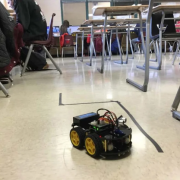Teacher Satisfaction Matters
The Student Research Foundation (SRF) surveyed high school teachers nationwide about their satisfaction on 14 job-related factors. (See infographic below.) 2,385 responded during Fall 2018. The data, collected pre-Covid, provide insights into teachers’ willingness to rally after schools closed and possible impacts of any Covid-induced budget cuts on learning environments.
Patterns of Satisfaction
Teachers responding were most often satisfied with:
- Subjects taught (83%)
- Students taught (74%)
- Autonomy (66%)
These patterns are consistent with a mission-focused workforce. Teachers’ relatively high rates of satisfaction with what they do and with whom they serve almost certainly helped them rise to the occasion, as carefully crafted lesson plans had to be adapted quickly to new strategies and new technologies after schools closed.
However, even mission-focused workers must pay their bills. Teachers were least often satisfied with compensation (40%). This is no surprise. The Economic Policy Institute has found teachers average 21.4% less in weekly wages than professionals with comparable education and experience.
Implications
As states struggle to balance budgets in the wake of Covid-related emergency spending, how might educational environments fare if school budgets are slashed? We explore this question by comparing teachers most satisfied and least satisfied with compensation prior to Covid-19.
The good news is “subjects teach” and “students teach” continue to be the top areas of satisfaction for both teachers most and least positive about compensation. The bad news is that financial struggles may take a toll on teacher satisfaction with workplace factors. This is vividly illustrated by:
- Subjects taught. 96% of teachers highly positive about pay are satisfied with the subjects they teach, compared with only 62% of teachers least positive about pay are. This 34-point “satisfaction gap” may suggest financial struggle exacts a toll.
- Students taught. 88% of the teachers most positive about compensation are satisfied with the students they teach, compared with only 48% of teachers least positive about compensation. Again, the financial struggle may explain this 40-point satisfaction gap.
The “satisfaction gaps” ripple across all the remaining 11 aspects of the educational environment (see infographic), hitting a maximum satisfaction gap of 55 points on technology. We can only speculate about the source of these satisfaction gaps. What is clear is that teacher compensation matters.
Beyond the Pandemic
Teachers’ commitment to their students has become a common theme in media coverage of the Covid crisis. That theme is validated by SRF’s survey of high school teachers conducted pre-Covid. But the analysis provides insights that policymakers should keep in mind as they wrestle with balancing budgets in the wake of emergency spending needed to address the pandemic.
- Educational funding matters, despite teachers’ commitment to their students and their mission.
- Teachers’ dissatisfaction with compensation may signal broad threats to the quality of education when communities fail to invest in education.
To learn more about SRF’s research on teacher satisfaction, consult our infographic and full report.











Leave a Reply
Want to join the discussion?Feel free to contribute!